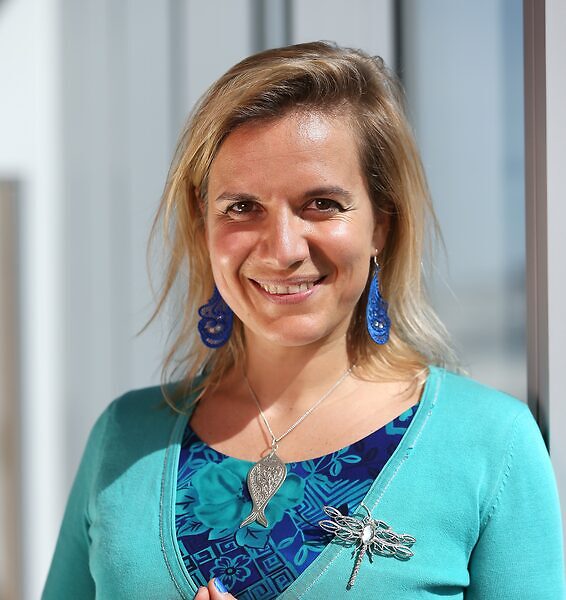A bottom up approach for analyzing circuits underlying navigation in vertebrates by Head of Research. Claire WYART, Paris Brain Institute/INSERM

Date
Location
Description
Head of Research. Claire WYART
Paris Brain Institute/INSERM
Title:
A bottom up approach for analyzing circuits underlying navigation in vertebrates
Abstruct:
While the ground plan of sensory and motor circuits is largely conserved across vertebrate species, their dynamic interactions are not well understood due to the difficulty of accessing each and all cells in the nervous system. To investigate communication among neurons in the brain and spinal cord, we leverage the transparency and genetic accessibility of zebrafish at the larval and juvenile stages. Our team investigates the circuits for sensorimotor integration in the spinal cord and brainstem. We have explored the molecular properties, functional organization and impacts of exteroceptive and interoceptive sensory systems on motor functions. We investigated mechano- and chemo-sensory ciliated sensory cells and how they modulate motor circuits in brainstem and spinal cord for forward locomotion and steering.
The Mesencephalic locomotor region (MLR) is an essential motor center for voluntary movement in vertebrates but had not been found in zebrafish. Our project led by Dr. Carbo- Tano identified the zebrafish MLR (Carbo-Tano et al., Nature Neuroscience in press). We now have evidence that MLR cells are active for sensory-evoked and spontaneous bouts (Chen, Ginoux et al., eLife 2023). Our ability to optically activate and silence MLR neurons opens new avenues to decipher the role of the diverse MLR cell types and their roles in innate locomotion.
The role and connectivity of reticulospinal neurons (RSNs) for eliciting bout types will be addressed by combining optogenetic silencing and activation to specific pools of V2a reticulospinal neurons, found recruited either for forward locomotion or for steering (Carbo- Tano et al., Nature Neuroscience in press). There are multiple evidence for recurrence of similar bouts during navigation (Dunn et al., eLife 2016; Reddy et al., Plos Biology 2022, (Sridhar, Costa, Vergassola and Wyart, in preparation), raising the roles of efference copies and sensory feedback in the persistence observed during navigation as recurrence of bouts. The MLR does not act alone: evidence reveal the role in forward locomotion and steering of the Interstitial Nucleus of Cajal or nucleus of the Medial Longitudinal Fasciculus (Berg et al., Neuron 2022), and possibly the center referred to as hindbrain oscillator (Chen et al., Neuron 2018; Wolf et al., Nature Comm 2017). We therefore probe the role of high brain centers upstream of reticulospinal neurons to sustain long term dynamics in motor sequences.
Short Bio:
Dr. Claire Wyart is fascinated by the process navigation and wants to understand how, even in simple animals, motor circuits are wired to enable efficient avoidance to danger and attraction to food or conspecifics. Claire obtained her PhD in biophysics and neuroscience from the University of Strasbourg where she and moved to University of California in Berkeley for her postdoc to establish chemo-optogenetics in vivo in the lab of Udi Isacoff. Now in the Paris Brain Institute, her lab studies sensorimotor integration and the motor commands connecting the brain to the spinal cord. She joins OIST this summer to investigate the complex interactions of male and female fish to synchronize gamete release during mating, and the extraordinary capability of coral reef fish to swim over tens of kilometers during their larval stage.
Claire is committed to science outreach and interdisciplinary training in neuroscience.
Websites
https://wyartlab.org
https://zenith-etn.com
@ClaireWyart
@Wyartlab
Subscribe to the OIST Calendar: Right-click to download, then open in your calendar application.



